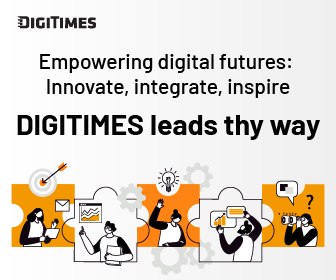As cloud computing and data center industries accelerate the adoption of open architecture and open firmware, the traditional firmware ecosystem is undergoing deep restructuring.
AMI and Taiwan's ODMs Join Forces to Build the Next-Generation Infrastructure
Open architecture has shifted from a technical option to an industry mainstream. Kenneth Tao, Director of Business Development at American Megatrends International (AMI), emphasizes that the company constantly adjusts its strategy and product roadmap to align with industry evolution, positioning itself as an "open architecture builder" that provides truly adoptable open-source platforms.
From IP Code to Open Source: AMI Responds Precisely to Industry Transformation
As CSPs increasingly collaborate directly with ODMs, the industry's structure has changed significantly. Tao explains that Cloud Service Providers (CSPs) are no longer merely purchasing off-the-shelf products - they now seek greater control over product definition and resources, gradually establishing maintainable proprietary platforms. Many CSPs come from open-source ecosystems and prefer building platforms using their own open firmware frameworks to gain greater control and differentiation.
AMI has long-standing ties with the Open Compute Project (OCP), having collaborated since the early days of OCP's promotion of open hardware specifications. Recognizing the widespread adoption of OCP-compliant servers and the push for standardized hardware production by ODMs, AMI proactively established corresponding firmware standards and validation processes. It also participates in multiple working groups to convert standards into product development guidelines, accelerating customer adoption. Notably, AMI became the first independent BIOS vendor to receive OCP S.A.F.E. designation, helping ODMs/OEMs provide firmware security and code quality assurance to end users.
Based on this foundation, AMI introduced open platforms such as MegaRAC Community Edition and Aptio Community Edition, helping customers swiftly implement open-source strategies. In this evolving ecosystem, AMI plays the role of "infrastructure provider at the firmware layer," creating a stable and scalable base. This allows clients to integrate their own IPs and pursue differentiated development. Tao emphasizes that this is not simply a technical decision - it reflects a systematic transformation responding to the needs of the value chain. AMI has evolved from a traditional IP vendor into a builder of open architecture committed to delivering a maintainable, multi-scenario firmware platform.
Transforming from Proprietary Firmware to Open Architecture: A Major Challenge
Tao acknowledges that this transition is a major undertaking. The biggest hurdle is the varying definitions and expectations of "open source" across industry players. CSPs want different ODM platforms to share the same firmware base to ensure consistency in testing, maintenance, and deployment. ODMs, meanwhile, must meet both CSPs' open-source demands and diverse customization requirements from enterprise clients, facing dual pressures.
On the technical side, challenges abound - OpenBMC differs significantly from AMI's traditional IP BMC architecture. AMI's previous development environment centered around Debian. OpenBMC, however, is based on the Yocto framework, which complicates integration.
To solve these issues, AMI developed the "OneTree Architecture," which manages multiple system codebases in a unified way, establishing a standardized and scalable open firmware foundation. This allows customers to rapidly develop and extend proprietary features while minimizing integration and maintenance costs. AMI also adopts a strategy of "Open Source Base + Commercial Value-Added Modules." The open base offers a standard framework for rapid deployment, while proprietary IP modules are selectable based on needs, enhancing differentiation and market competitiveness.
Accelerating ODM Transformation with AMI's Open Platforms: Reducing Maintenance Costs and Boosting Competitiveness
Many ODMs have already implemented AMI's open solutions. Tao points out two major benefits for ODMs. First, AMI's pre-built open architectures allow for seamless integration with hardware platforms, shortening development and validation cycles. Second, they reduce maintenance burdens, as both OpenBMC and BIOS are complex systems requiring continuous updates and significant manpower for security management. With AMI's support and standardized open platform, ODMs can minimize their maintenance costs.
Looking Ahead: Full Strategic Deployment Across Four Pillars
For future planning, Tao shares that AMI will strategically invest in four key areas: "Talent Development", "Toolchain", "System-Level Management Support", and "Validation Platforms." To address the shortage of senior firmware engineers in Taiwan, AMI has formed a dedicated training team, offering modular development interfaces for seasoned engineers and complete training and certification processes for newcomers, accelerating client team growth.
Simultaneously, AMI continues to develop its OneTree Development Studio tools for building a code environment, firmware update tool, and DCM multi-server/rack management, extending open architecture from single-server to rack-level to meet centralized management needs for large-scale cloud and AI infrastructures.
Additionally, AMI plans to promote the "Meridian Triple-Win Validation Platform," which pre-validates ODM hardware platforms using its own open-source code. This enables CSPs to directly select hardware and firmware combinations that match their needs and improve consistency in firmware experience. For ODMs, obtaining AMI certification expands market opportunities, while AMI broadens its platform coverage, achieving a win-win-win for CSPs, ODMs, and AMI.
United with Taiwan's ODMs: From Manufacturers to Definers
Observing recent industry developments, Tao believes Taiwan's ODMs and system integrators have shifted from passive manufacturers to frontline product definers. They now directly understand customer needs and provide rapid feedback for design and supply chains.
He highlights three advantages Taiwan companies bring to the OCP/SRI ecosystem: direct connections to global cloud/AI clients, high development flexibility, and the potential to evolve from ODMs to OEMs or even service providers.
AMI's relationship with ODM clients has transformed into a partnership in facing end customers. By leveraging mutual insights into both market and design, collaboration improves product development efficiency and alignment. Tao concludes by stressing that open source is not about "passing the baton to the community," but a joint effort in maintenance and implementation, balancing technical openness with business value. The fusion of Taiwan's ODMs and AMI will become a best-practice model for rolling out open system architectures.
As open architecture becomes mainstream, those able to provide stable infrastructure, professional integration, and ongoing support will play a pivotal role in the new ecosystem. AMI will continue to serve as a strong backbone for Taiwan's industry as it transitions toward open source, with deep firmware expertise and access to global ecosystem resources.

Kenneth Tao, Director of Business Development at AMI




